Appendices: Maps (War of the Two Kings, 1529-1537)
War of the Two Kings (Christian II expedition, 1529)
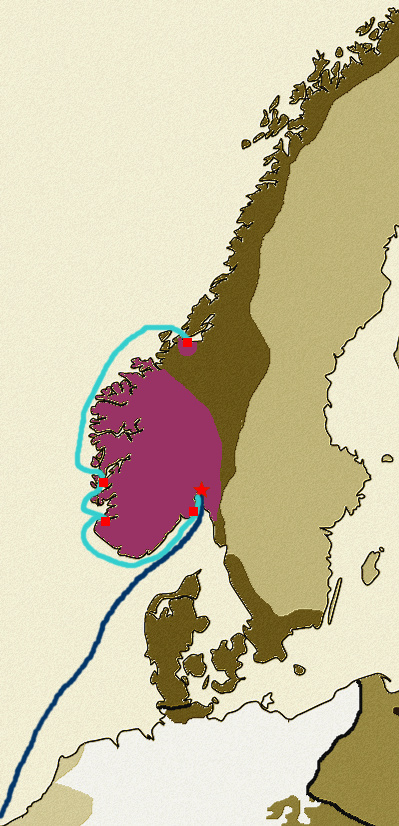 Legend:
Legend:
1- Dark blue line: Christian II expedition in summer 1529
2- Red star: Christian II's success (Oslo rally)
3- Cyan blue line: Soren Norby and Klemen Andersen's expedition to rally the other major cities of the Kingdom of Norway (autumn 1529)
4- Red squares: cities rallied to Christian II
5- Dark purple territory: territory rallied or controlled by Christian II
War of the Two Kings (1530)
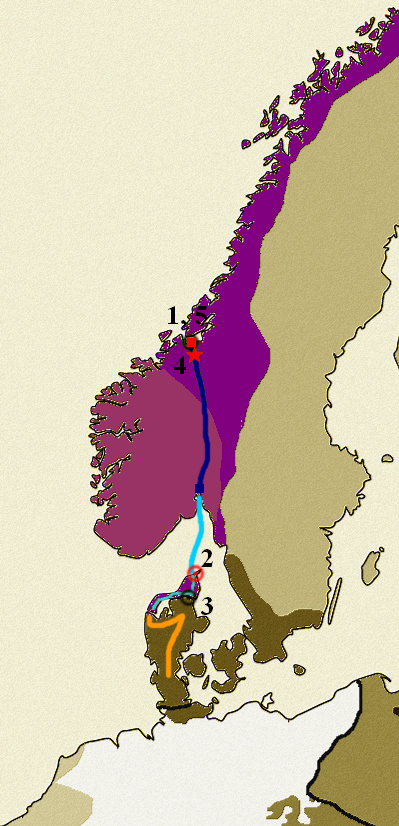 Legend:
Legend:
1- Cyan blue line: Klemen Andersen's expedition to rally Vendyssel and Jutland to Christian II's cause
2- Dark blue line: expedition by Christian II's forces to retake Trondheim (summer 1530)
3- Light orange line: John Rantzau's campaign towards Vendyssel
4- Red star: success of Christian II's allies (4: Battle of Lundamo)
5- Red square: recapture of Trondheim (5)
6- Red dot circle: capture of Skagen (2)
7- Circle with black dot: capture of Tronheim by Vincens Lunge (1) and failure of Aalborg (3)
8- Burgundy purple territory: territory controlled by Christian II in early 1530.
9- Dark purple territory: territory rallied or captured by Christian II's allies at the end of 1530.
War of the Two Kings (1531)
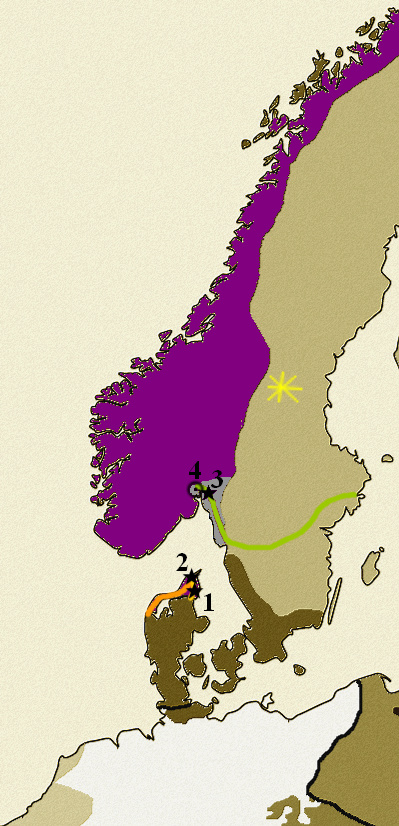 Legend:
Legend:
1- Light orange line: John Rantzau's campaign to retake the Vendyssel
2- Apple-green line: Gustav I Vasa's campaign against Christian II
3- Black star: Danish-Norwegian defeat (1: Battle of Wra, 2: Loss of Skagen 3: Battle of Sarpsborg)
4- Black dot circle: loss of Oslo (4)
5- Yellow spark: Bell revolt in Dalarna against Gustav I
6- Dark purple territory : territory controlled by Christian II
7- Gray territory : territory captured by the Swedes
War of the Two Kings (1532)
 Legend:
Legend:
1-Dark blue line: Christian II's campaign in early 1532
2- Light orange line: Mogens Gøye's campaign in summer and autumn 1532
3- Circle with red dot: recapture of Oslo (1)
4- Black star: Christian II's defeat at Ytterbygda (2)
5- Black dot circle: loss of Oslo (3)
War of the Two Kings (1534)
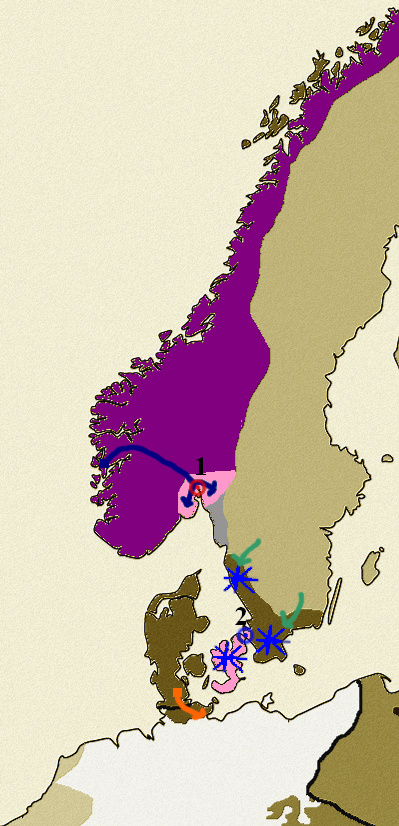 Legend:
Legend:
1- Dark blue line: Christian II's campaign
2- Light orange arrow: Christian III's campaign against Lübeck
3- Cyan green arrows: Swedish raids
4- Red-dotted circle: recapture of Oslo (1)
5- Blue-dotted circle: siege of Helsinborg (2)
6- Blue spark: pro-Christian II revolt
7- Pink territory: territory retaken by Christian II or occupied by pro-Christian II rebels
War of the Two Kings (1535)
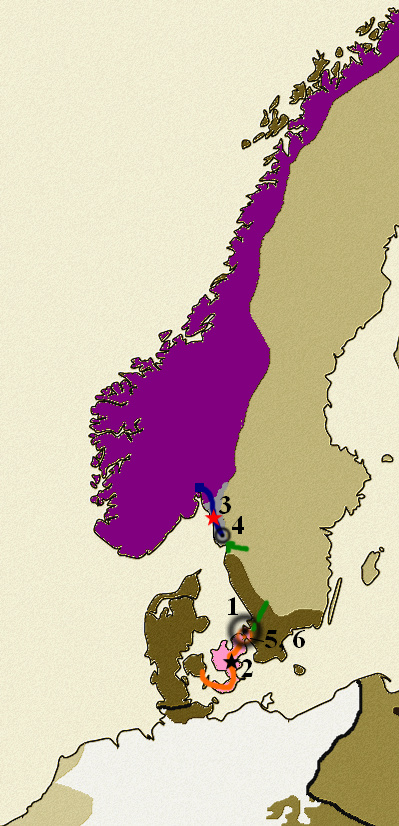 Legend:
Legend:
1- Dark green arrows: Swedish attacks
2- Dark blue line: Christian II's campaign against Bohuslan
3- Light orange line: John Rantzau's campaign in Fionie
4- Red star: Christian II's victory at the Battle of Uppsala (3)
5- Black star: John Rantzau's victory at the battle of Øksnebjerg (2)
6- Black dot circle: Loss of Helsinborg (1) and failure to capture the fortress of Bohus (4)
7- Orange-dotted circle: sieges of Copenhagen and Malmö (5 and 6) (since the two cities are almost opposite each other, the circle counts as two).
War of the Two Kings (1536)

Legend:
1- Dark blue line: naval support expeditions to Malmö and Copenhagen by Klemen Andersen
2- Cyan blue line: Dutch fleet and Søren Norby's expedition to support Copenhagen and Malmö
3- Circle with black dot: capitulations of Malmö and Copenhagen in winter 1536







